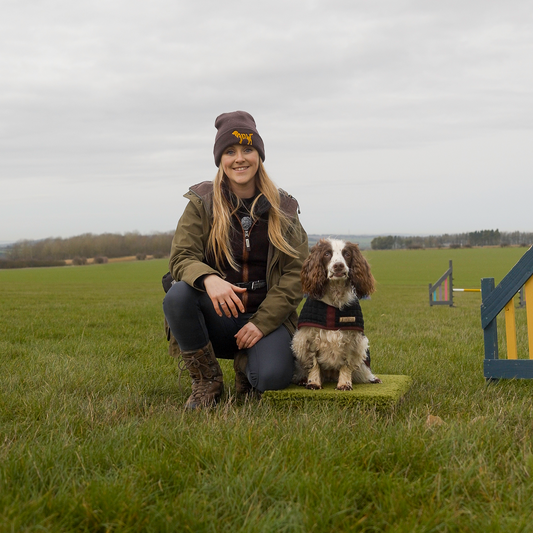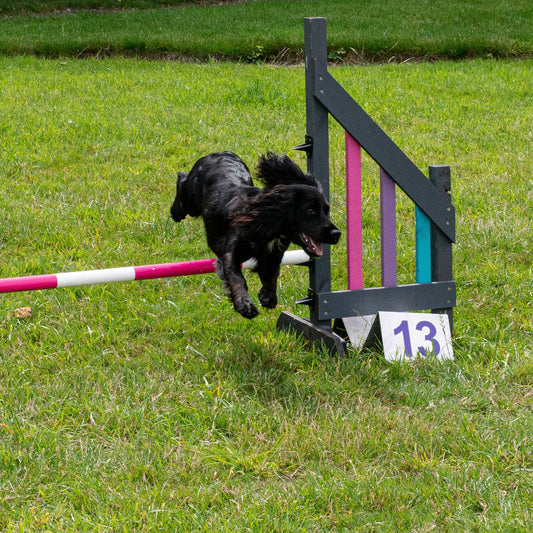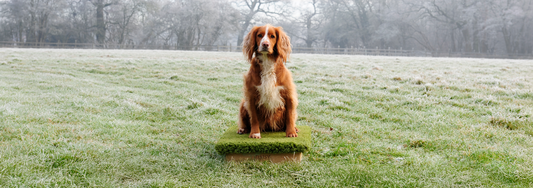Crate training a puppy
What can be used to create a den?
A den can be created using a crate or puppy pen. Owners can create positive associations for the puppy being in the space by making it the place that the dog finds things they like...
What to put in a puppy crate:
- A comfortable bed
- Chews that are a variety of textures
- Interactive toys/enrichment items
- A warm hot water bottle wrapped in a blanket.

Figure 1 This boys owner has created a comfortable and safe den with a bed, blankets and a Kong toy inside; a cover gives the space an extra feeling of security for the puppy.
Why crate train a puppy?
It is valuable to have a space that your dog feels comfortable in so that you can leave them in a space that is safe and secure when you cannot supervise them.
How to crate train a puppy?
When the puppy is pre-occupied, unbeknown to them, sprinkle some treats into the den. When you have added the treats to the den encourage the puppy over to find the hoard.
Tips for crate training a puppy: with working breeds such as spaniels, hiding the treats a little and allowing them to use their nose to hunt them out will add to the rewarding experience!
Puppy crate training schedule
Step one: door open
Leave the door open as the puppy explores and eats the treats. The door being open gives the dog control to leave the space. Repeat this often until you see the puppy voluntarily taking themselves to the den to see if there are any goodies. This shows that your positive association training has led the dog to expect good things from the space.
Step two: close the door, short duration
Sprinkle the treats in as before; encourage the puppy inside the crate to explore and eat the treats. While they are occupied, close the door to the pen or crate, opening the door as they finish eating for the dog to have the freedom to leave.
Step three: close the door, extend the duration.
Rather than releasing the puppy straight after they finish eating, add a pause before opening the door. Slowly increase the duration they are in the den before the door is opened. Do this in small incremental steps, for example, starting with just a few seconds, before extending it to a couple of minutes.

Figure 2 This 6-month-old spaniel has had a covered crate since coming to her home as a puppy; her owner is now able to leave her in the den when she goes to work
If you have any questions, please click here to get in touch.







